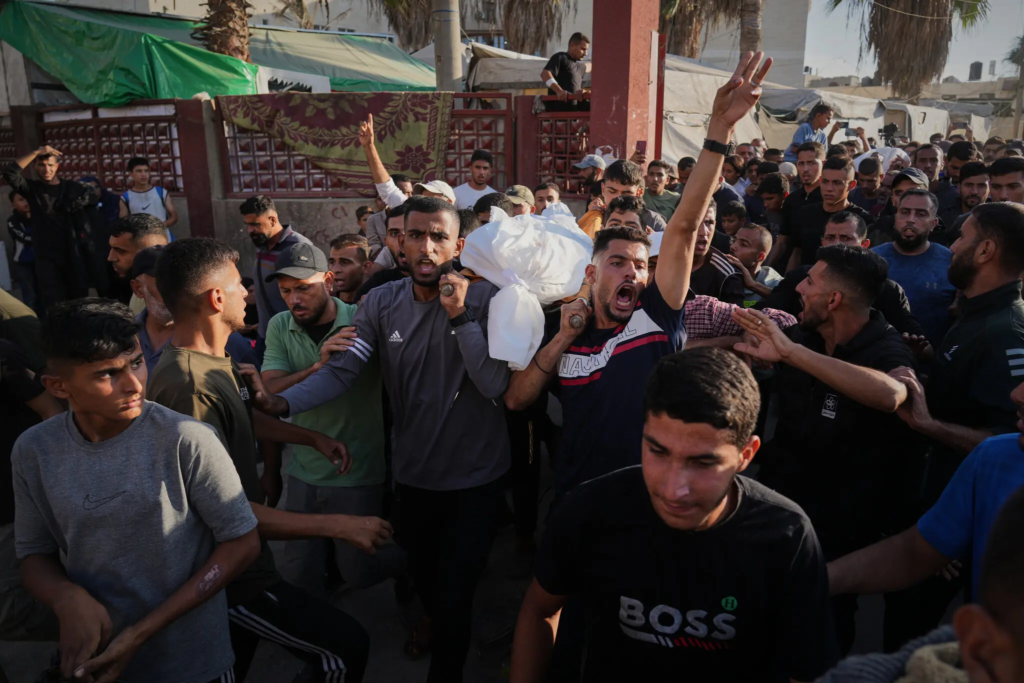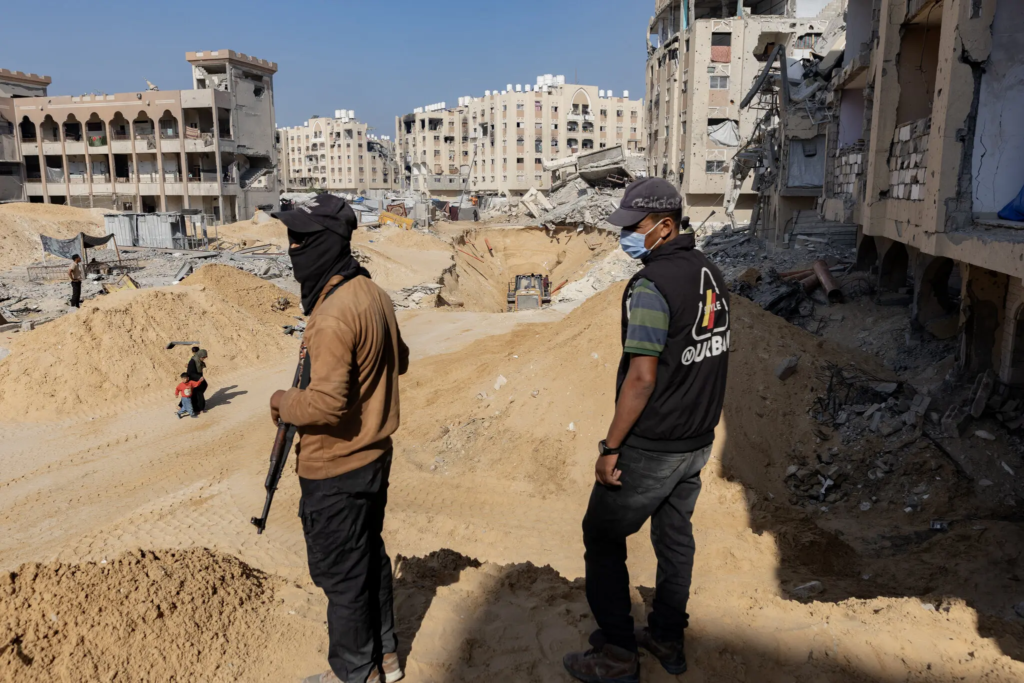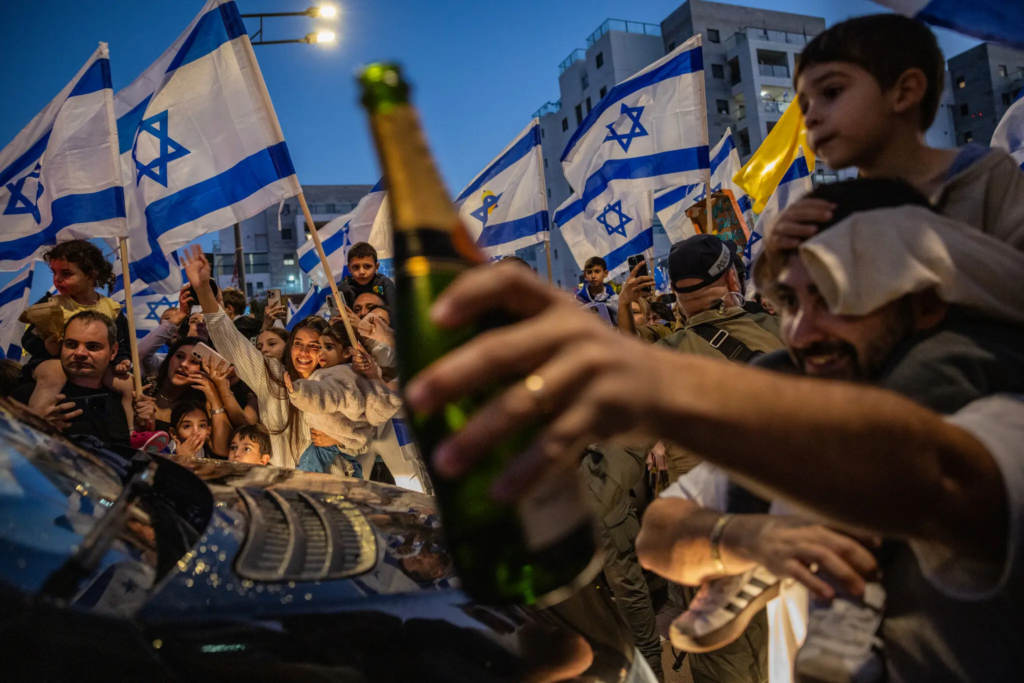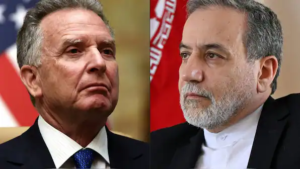The fragile ceasefire between Israel and Hamas is under its most serious pressure yet after Israel launched a wave of air and artillery bombardment across the Gaza Strip late on Sunday. The assault came after what Israel described as a deadly attack by Palestinian militants in which two Israeli soldiers were killed in Rafah, a southern Gaza area still occupied by Israel.
Despite the new violence, both Israel and Hamas indicated they remain committed to upholding the U.S.-brokered truce — though the weekend’s events have thrown its future into serious question.
Israel Strikes Back After Soldiers Killed
The Israeli Defense Forces (IDF) said the troops were targeted by unidentified militants using anti-tank missiles and small-arms fire in violation of the ceasefire lines under the recent agreement. Israel responded with dozens of pinpoint strikes across Gaza targeting what it called Hamas command centers, arsenals, and tunnel networks.
By nightfall, Israeli Prime Minister Benjamin Netanyahu announced that the military had begun the “renewed enforcement of the ceasefire” — language that was widely interpreted as a rationale for a limited operation to punish Hamas without collapsing the framework of the truce.
A minimum of 44 Palestinians were killed and dozens more wounded in the recent barrage of attacks, the deadliest day since the announcement of last week’s ceasefire, Gaza’s Health Ministry reported.
Humanitarian operations in Gaza were also temporarily suspended, Israeli officials said, citing security concerns and “the intensity of ongoing military activity.” Distribution of relief was to resume once the air strikes ceased.
Both Sides Trade Blame Over Ceasefire Breach
Each side accused the other of breaking the ceasefire. The IDF said Hamas militants had “deliberately provoked a clash,” but Hamas said it was not involved, saying contact with its units in Rafah had been lost for months.
Izzat al-Rishq, a Hamas official, said Israel’s claims were “fabricated excuses to justify aggression,” as a further Hamas delegation arrived in Cairo on Sunday for discussions with Egyptian and Qatari mediators who are mediating the rollout of the ceasefire.
“We are still committed to the ceasefire,” Hamas said, “but Israel continues to breach it on the ground and in the air.”
Netanyahu, meanwhile, held an emergency consultation with top security officials and vowed to respond “forcefully” to militants who have killed Israeli troops.
Ceasefire Under U.S. Pressure
The most recent truce — negotiated amid intense diplomatic pressure from the Trump administration — had only a week ago been hailed as a step toward ending the two-year war that erupted following Hamas’s October 7, 2023, attack on southern Israel.
Under the agreement, Hamas was to release remaining hostages and bodies, and Israel would free Palestinian detainees and permit a massive increase in humanitarian aid into Gaza. The number of aid trucks crossing into the enclave was to be doubled to 600 a day.
Nevertheless, Sunday’s violence now puts that fragile progress at risk.
This is the first serious challenge to the Trump-brokered ceasefire,” a senior regional diplomat said, on condition of anonymity. “If both sides don’t step back now, it could entirely unravel.”
Hostage and Prisoner Swaps Continue Amid Tension

The weekend escalation came after Israel announced the return of two more dead hostages — 54-year-old Ronen Engel from Kibbutz Nir Oz and Sonthaya Oakkharasri, a 30-year-old Thai farmworker from Kibbutz Be’eri — both of whom are believed to have been killed in Hamas’s October 2023 incursion.
Hamas freed 20 live hostages and handed over the bodies of 12 others, though Israel says that the bodies of at least 16 hostages are still in Gaza. Forensic experts identified that one returned body was not that of any reported missing captive.
Israel freed nearly 2,000 Palestinian prisoners and returned more than 100 bodies of Palestinians who were killed in the fighting.
Israeli officials have accused Hamas, however, of deliberately dragging its feet, saying many bodies of Israeli captives remain unrecovered or buried beneath the rubble of buildings bombed out by Israel. Hamas has contended that Israeli airstrikes have made it nearly impossible to locate the remains.
Calls for Renewed War From Israel’s Hard Right

The latest bloodshed reignited internal tensions within Israel’s government. Right-wing ministers — including National Security Minister Itamar Ben-Gvir — demanded the full resumption of hostilities, arguing that Hamas cannot be trusted to uphold any ceasefire.
“Every day that we delay gives Hamas time to regroup,” Ben-Gvir said. “The idea that Hamas will respect a truce is naive and dangerous to Israel’s security.”.
His statement underscores the political divide within Netanyahu’s coalition, with moderates supporting the maintenance of the ceasefire under U.S. and international pressure, and hardliners pushing for an unequivocal military victory to finish off Hamas once and for all.
Gaza’s Humanitarian Crisis Deepens

Even before Sunday’s bombings, Gaza was on the brink of humanitarian catastrophe. Months of incessant bombardment have leveled massive swathes of the enclave to the ground. More than two million citizens — most of them displaced multiple times — are themselves sheltering amidst rubble, with dire shortages of food, water, and medicine.
Most civilians have no idea where safe zones and ceasefire lines are, as dilapidated communication and battered infrastructure make Israeli-controlled areas difficult to traverse.
“People are trekking through destroyed neighborhoods with no idea if they’re stepping into prohibited areas,” said one aid worker with the Palestinian Red Crescent. “Every mistake can be fatal.”
A Ceasefire on Life Support
Despite all the recriminations, both Israel and Hamas have shown that they do not want to see the complete collapse of the truce — at least, not yet. Each has strong reasons to avoid resumed full-blown fighting, analysts say: Israel is facing increasing international censure over civilian casualties, and Hamas requires time to recover politically and militarily following months of pounding.
However, the resumed hostilities show how fragile the ceasefire is, and how quickly the conflict could once again spiral out of control.
As one Middle East expert put it:
“This ceasefire is less a peace deal and more a temporary lull between two weary foes — one spark away from eruption.”




